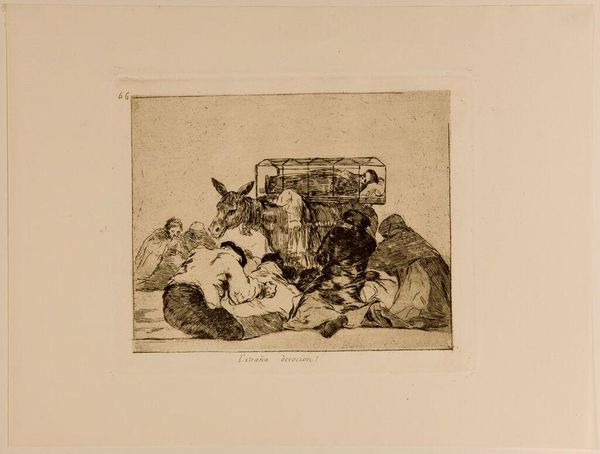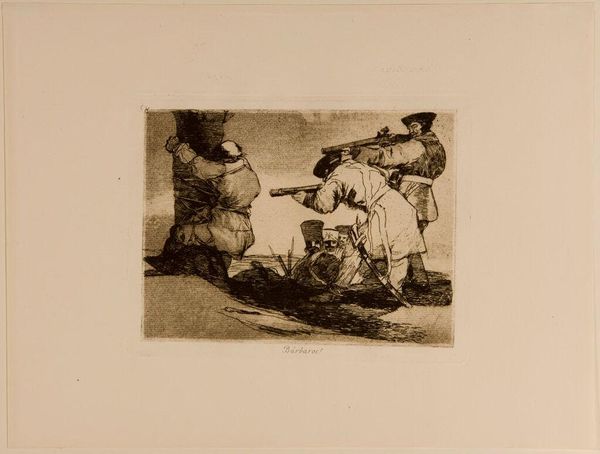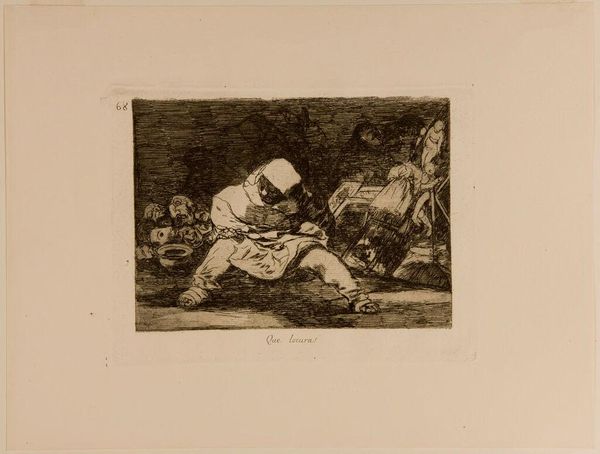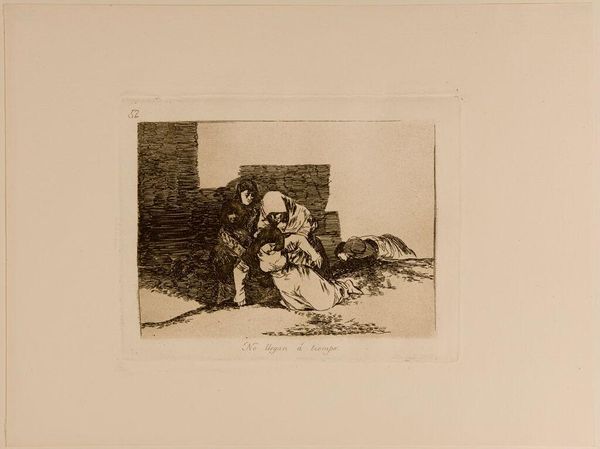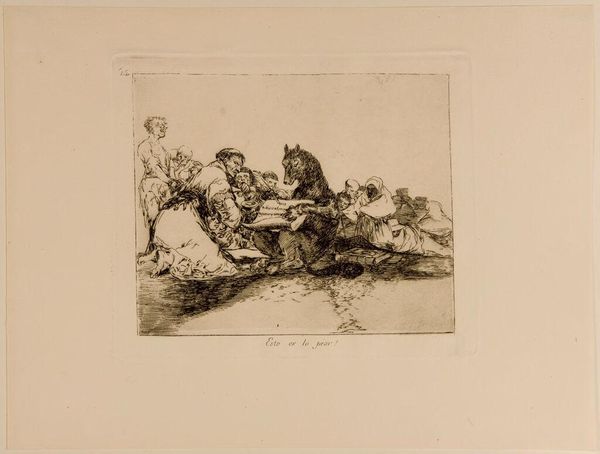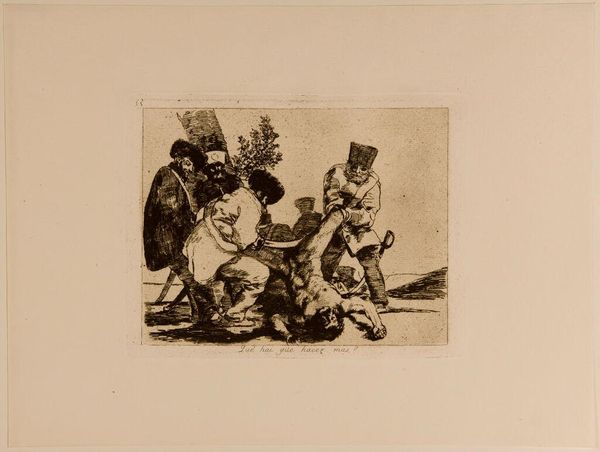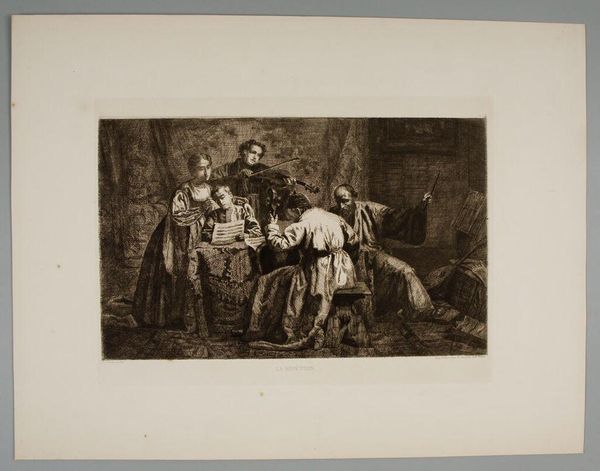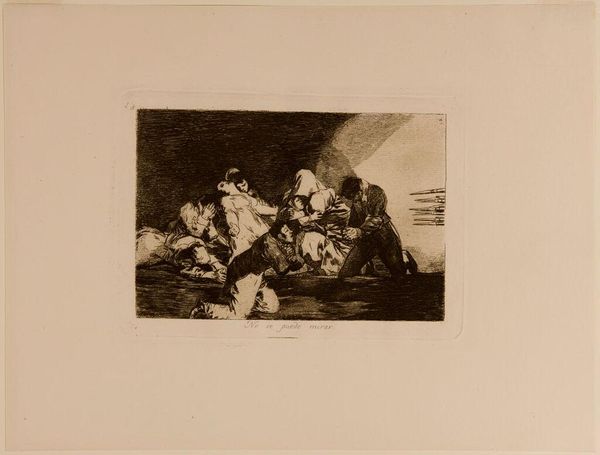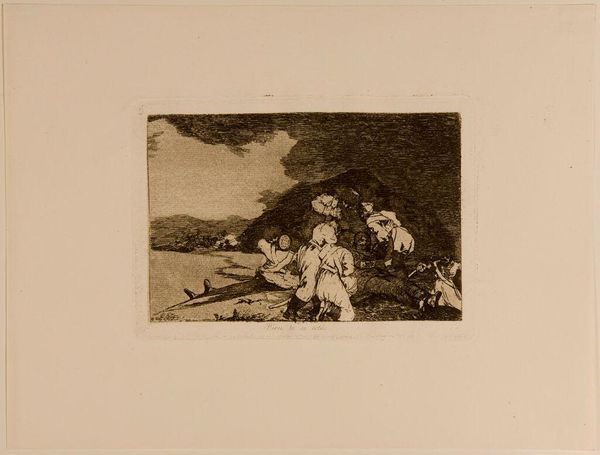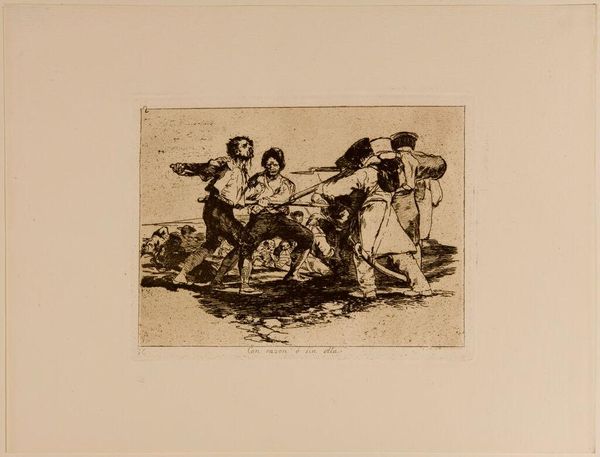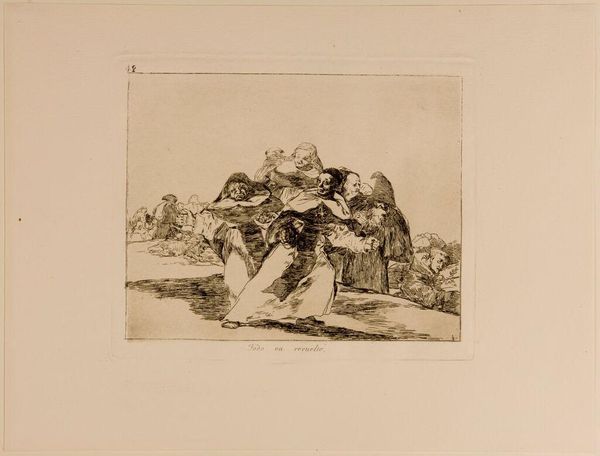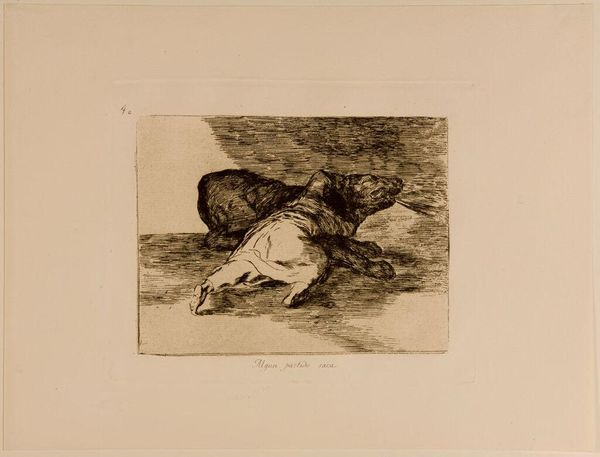
Copyright: CC0 1.0
Curator: Goya's print, titled "Truth Is Dead," immediately evokes a sense of dread. The composition feels stark, yet the etching technique creates a captivating interplay of light and shadow. Editor: Indeed. Goya's mastery of aquatint allowed him to achieve these tonal gradations. It's critical to consider the socio-political context, too. The print was likely created during a period of intense political upheaval in Spain, making the death of truth a potent commentary. Curator: I'm drawn to how the artist manipulated the etching process to convey the weight of disillusionment. The density of the lines seems to physically embody the oppression of knowledge. Editor: Right. The print served as a form of visual protest. It's not just about the death of a concept, but about the institutions complicit in that demise. Curator: Ultimately, the print's enduring impact is perhaps due to its tangible quality. The labor involved in its production heightens its meaning. Editor: Agreed. By examining the role of imagery, we can better grasp the broader societal anxieties Goya captured.
Comments
No comments
Be the first to comment and join the conversation on the ultimate creative platform.
